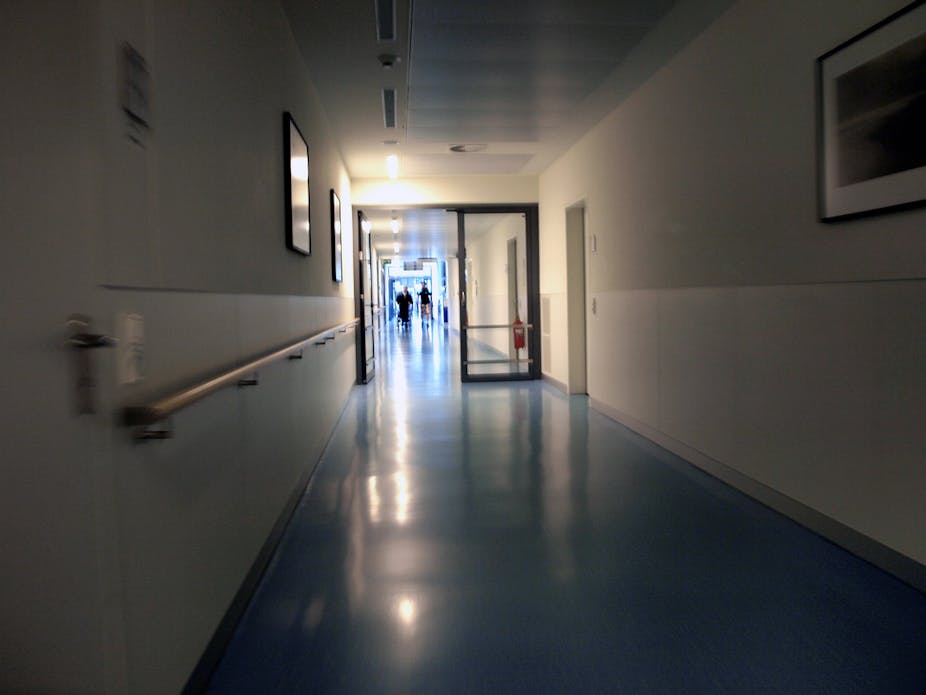Australia’s public health system is ostensibly based on the notion of equity of access. But research recently published by my colleagues and I shows this is not the case in New South Wales public hospitals.
The National Healthcare Agreement between Australian states and the Federal government affirms the nation’s health system should:
provide all Australians with timely access to quality health services based on their needs, not ability to pay, regardless of where they live in the country.
Using the Australian Bureau of Statistics Index of Relative Advantage and Disadvantage to measure disadvantage, we found evidence that people in the highest socioeconomic groups were given priority for both urgent and non-urgent procedures in NSW public hospitals.
Public hospital patients in the least advantaged areas waited an average of two days longer for the most urgent procedures. For procedures with the longest waiting times, the average difference was over four months.
A clear pattern
These differences do not take into account factors that might legitimately affect waiting times.
The first such factor is clinical need. This is measured by the patent’s age, gender, diagnosis, and the nature and urgency of the procedure. Admitting people who are more ill quicker seems logical, but systematically admitting more economically advantaged patients with the same clinical need faster is discrimination.
The second factor is the supply of hospital services available to patients. People who are better-off may live in areas with a greater supply of hospital services and are admitted faster. And inequitable distribution of public hospital services is another aspect of discrimination.
Yet our results show considerable discrimination against less advantaged patients even when these factors are taken into account.
For the most urgent patients, differences in clinical needs explain only about a third of waiting-time advantage of the most economically-advantaged patients. But at least the two-day difference is a small gap.
For the least urgent patients, with long waiting times, clinical need explains very little of the gap between the least and most advantaged patients. Rather, discrimination accounts for the bulk of the waiting-time gap, especially the long waits.
Both forms of discrimination occur whether or not the procedure is urgent. But inequitable access to hospital resources is the largest contributor to the shorter waiting times of the more advantaged, less urgent patients.
There’s greater scope for discretion in admission priority where medical urgency is lowest. In these cases, different treatment of otherwise clinically identical patients accounts for a large part of the discrimination effect.
For the very longest waiting time procedures, the size of this effect is between 30 and 60 days.
Addressing discrimination
Our research highlights that hospital resources favour the more advantaged. So, if equity is the aim, there’s a potential gain from reallocation of these resources or from a reallocation of patients to hospitals.
Another interesting finding is that in public hospitals that admit a larger share of private patients, most with private health insurance, the socioeconomic waiting time gaps for less urgent public patients are larger.
The less advantaged public patients have their admissions delayed relative to the more advantaged public patients.
This is consistent with previous research showing that private patients have shorter waiting times than clinically comparable public patients in public hospitals.
A centrally managed system for assigning private patients to public hospitals could address this by promoting more equitable outcomes. And hospital prioritisation rules should be made transparent to the general public, in accordance with the principles of equity and fairness.
One way to promote greater equity would be to develop (and reward adherence to detailed guidelines for urgency assignment by procedure. These guidelines should explicitly take into account extra complications that patients may have.
The NSW Department of Health has moved to a more systematic assignment of urgency. This may reduce the differences in waiting times for clinically-similar patients that result from specialist discretion in assigning urgency categories.
Another way to reduce discrimination is to make it visible by requiring that hospitals report waiting times by indicators of payment status (private or public), patient socioeconomic status, as indicated by postcode of residence as well as by urgency.
Equity of access is an important value for the public hospital system. Addressing the sort of inequities that have crept into the system should be a priority for both state and federal governments.

